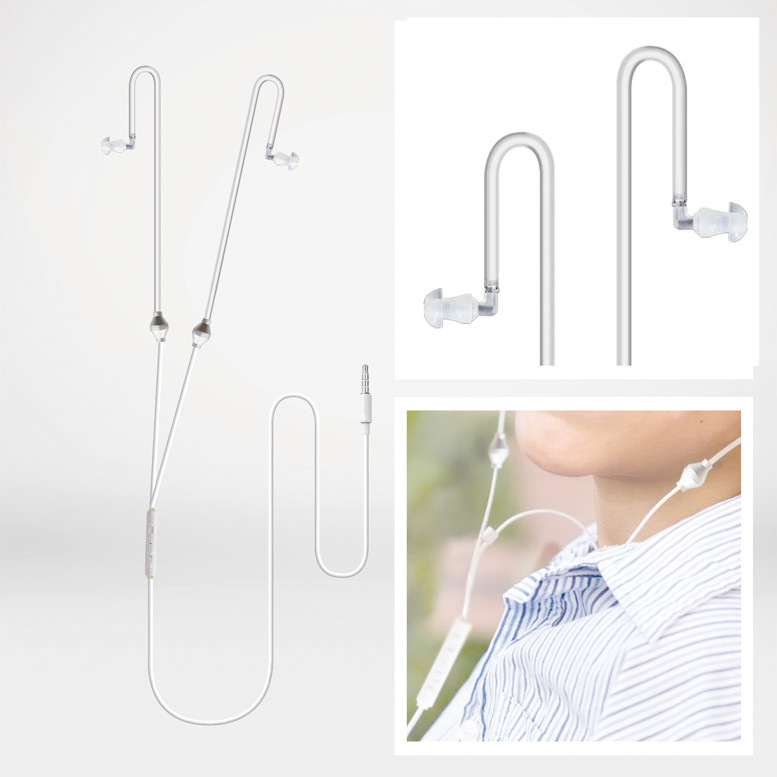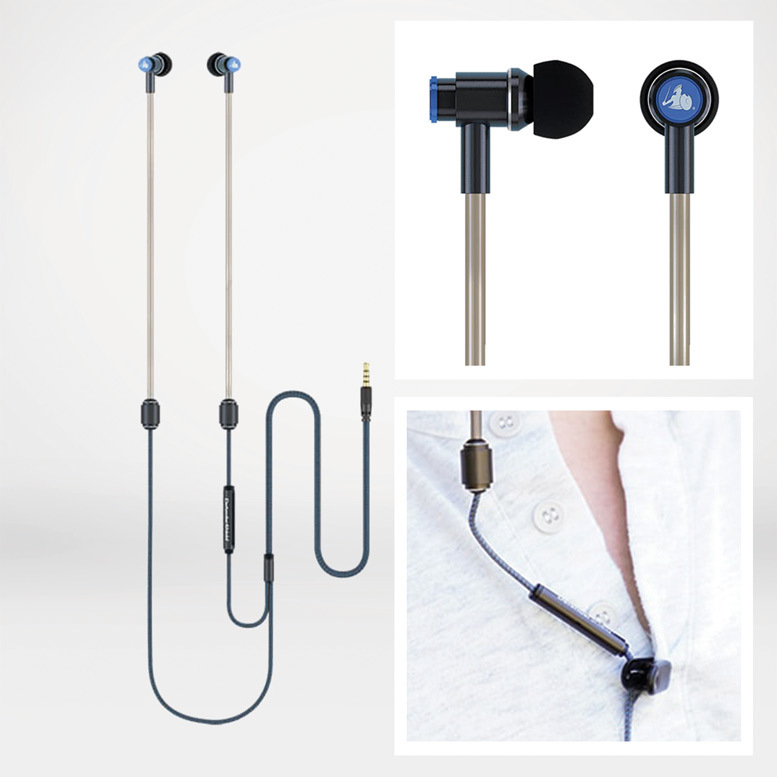AirPod-style Headphones EMF Radiation: Safety Guide and Alternatives
AirPod-style headphones have revolutionized the way we listen to music and take calls, becoming one of the most popular wireless accessories in history. However, as these tiny Bluetooth devices rest directly in our ear canals, questions about their electromagnetic field (EMF) radiation exposure have grown increasingly important. This comprehensive guide examines the latest scientific research, expert opinions, and practical alternatives to help you make informed decisions about AirPod-style headphones and wireless audio safety.
Why AirPod-style Headphones EMF Exposure Matters
AirPod-style headphones are essentially tiny computers with antennas, microphones, sensors, and circuits that emit electromagnetic field (EMF) radiation to communicate with your device—and with each other—through your head. Unlike larger devices that you hold at a distance, AirPod-style headphones place this radiation source directly inside your ear canal, just millimetres from sensitive brain tissue.
Understanding AirPod-style Headphones EMF Radiation
How AirPod-style Headphones Work and Emit Radiation
AirPod-style headphones emit EMF radiation whenever they are on—not just when you're actively listening to music. Unless switched off completely, wireless earbuds send and receive signals that expose you to low levels of radiation. To connect and stream sound via Bluetooth, they emit radiofrequency (RF) radiation at around 2.4 GHz per bud.
Key Differences from Other Devices
The issue isn’t necessarily high levels of EMF; it’s proximity. Microwaves also emit radiation, but you typically stand at least a couple of feet away. With Bluetooth earbuds, you place the transmitter inside the ear canal—very close to the head.
Proximity Concerns
Professor Jerry Phillips from the University of Colorado Colorado Springs notes: “My concern for AirPod-style headphones is that their placement in the ear canal exposes tissues in the head to relatively high levels of radio-frequency radiation.” The close proximity to brain tissue makes AirPod-style headphones potentially more concerning than other wireless devices used at a distance.
Current Scientific Research
Recent EMF Studies and Findings
In 2015, over 200 scientists appealed to the World Health Organization and the United Nations, asking for stricter guidelines limiting EMF exposure from wireless devices. While this wasn’t specifically about AirPod-style headphones, it highlights broader scientific concerns about wireless device radiation exposure.
Since then, many more scientists globally have called for urgent action regarding fit-for-purpose guidelines.
WHO Cancer Classification
The World Health Organization’s International Agency for Research on Cancer (IARC) has classified radiofrequency EMF radiation as “possibly carcinogenic to humans (Group 2B)” based on an observed increase in risk for certain brain tumours. This classification applies to all RF radiation, including that emitted by AirPod-style headphones.
Some scientists argue the precautionary approach should go further than a ‘possible’ classification, while debate continues.
Independent Testing Results
Some independent EMF testing has reported that “the average EMF intensity produced by AirPod-style headphones was among the highest of the headphones tested,” with readings in the 7–10 milligauss range.
Regulatory Guidelines and Limitations
Current safety regulations may not reflect modern usage patterns. For example, SAR limits and certain RF exposure frameworks were set in the 1990s, before today’s ubiquitous wireless wearables. Many observers question whether existing standards adequately account for long-term, low-level, near-body exposure.
Potential Health Effects
Reported Symptoms
Users have reported various symptoms potentially linked to extended AirPod-style headphone use, including headaches, ear discomfort, and concentration issues. While these reports are anecdotal, the proximity of the radiation source to the head warrants attention, especially during long listening sessions.
Children and Vulnerable Populations
Children may be more vulnerable to potential adverse effects of EMF/RF exposure due to thinner skulls and different physiology. As a precaution, it’s advisable to favour safer alternatives for children when practical.
Emerging Research Areas
Ongoing research is investigating potential links between EMF exposure and cellular stress, sleep disruption, and neurological effects. Many digital systems—including earbuds—operate with electromagnetic pulses across a range of frequencies; understanding biological interactions at low intensities remains an active field of study.
Expert Opinions and Recommendations
Medical Professional Perspectives
Some clinicians note that AirPod-style headphones, like other wireless devices, emit non-ionising radiation at relatively low power densities—insufficient to ionise cells. Nevertheless, many experts recommend a precautionary approach while evidence continues to develop.
The Precautionary Principle
Joel Moskowitz, director at UC Berkeley’s School of Public Health, argues that while certainty is lacking, research on similar radiation types suggests a reasonable basis for caution over the long term.
Safety Tips for AirPod-style Headphone Users
Practical EMF Reduction Strategies
Use only one earbud
Using a single bud can prevent the earbuds from communicating through your skull (in models that use ear-to-ear links) and can more than halve exposure time at the head.
Limit usage duration
Take regular breaks, and avoid sleeping with earbuds in your ears.
Store properly when not in use
Earbuds often search for a signal when out of the case. Keep them docked to minimise idle transmissions.
Use for calls only when necessary
Reserve earbuds for hands-free calls and use other listening options for longer music sessions.
Keep your phone at a distance
Avoid carrying the phone against your body while using earbuds to reduce total combined exposure.
Safer Alternatives to AirPod-style Headphones
Wired Headphones
With wired options, audio travels up a cable rather than being transmitted by a radio near your ear. While not as isolating as air-tube designs, quality wired headphones typically have negligible EMF at the ear compared with Bluetooth devices.
Air-Tube Headphones: The Gold Standard
Air-tube headphones deliver sound via hollow tubes. The speakers convert electrical signals into acoustic energy away from the head, sending sound through flexible, hollow air tubes to your ears—without metal conductors at the ear.
How Air-Tube Technology Works
- Speakers sit a few inches down the cord, away from the ear
- Sound travels through hollow tubes containing only air—no electrical wires near the head
- Eliminates EMF at the ear while maintaining audio quality
- Compatible with devices that have standard headphone jacks or adapters
Premium Wireless Alternatives
If you prefer wireless convenience, consider:
- Over-ear Bluetooth headphones: The receiver sits farther from the ear and spreads the field over a larger area.
- Bone-conduction headphones: Electronics sit away from the ear canal and do not obstruct the ear.
- Lower-power Bluetooth modes: Some models use BLE or power-optimised profiles that may reduce output.
Top Recommended Alternatives
- DefenderShield Air-Tube Headphones: Speakers positioned safely away from the head.
- Traditional wired earbuds: Reputable audio brands with in-line mic options.
- Over-ear wired headphones: Options from Audio-Technica, Sony, or Sennheiser offer excellent sound with minimal EMF exposure.
- Shielded-cable headphones: Some models include shielding along the cable for additional reduction.
Making the Right Choice for Your Health
Key Considerations
When weighing convenience against potential risk, consider your usage patterns, sensitivity, and alternatives. While there is no strong evidence linking normal exposure from AirPod-style headphones to adverse health effects, proximity and cumulative exposure justify sensible precautions.
Usage Guidelines for Different Groups
- Heavy users (3+ hours daily): Prefer wired or air-tube alternatives for long sessions.
- Occasional users: Follow the tips above and limit session length.
- Children and teens: Prioritise wired options where feasible.
- Health-sensitive individuals: Choose air-tube or traditional wired options.
The Bottom Line on AirPod-style Headphone Safety
Alarmist claims are common, but most consumer devices operate at low, intermittent power levels and within existing regulatory thresholds. Even so, the long-term effects of chronic, low-level, near-body exposure are still being researched, so prudent avoidance and smart usage are reasonable.
Future Research and Recommendations
Researchers continue to study RF exposure from wearables and phones, improving exposure assessment and exploring biological mechanisms. As technology evolves, staying informed helps you make better choices about wireless audio.
Staying Informed
- Monitor updates from the WHO and national health agencies regarding EMF guidelines.
- Follow peer-reviewed research on wireless device health effects.
- Consider subscribing to EMF research organisations for updates.
- Speak with healthcare providers about individual concerns.
Conclusion
AirPod-style headphones offer exceptional convenience, but their in-ear, near-head placement raises reasonable questions about EMF exposure. Taking simple, practical steps—limiting duration, using one earbud, or choosing wired/air-tube alternatives—can meaningfully reduce exposure while preserving usability.
Action Steps for AirPod-style Headphone Users
- Review your daily usage and reduce where practical.
- Use one earbud and take regular breaks.
- Prefer wired or air-tube options for long listening.
- Keep up with ongoing EMF research and guidance.
- Choose the balance of convenience and caution that suits your needs.
Whether you continue with AirPod-style headphones and apply safety practices or switch to alternatives, make the decision that aligns with current evidence and your personal circumstances.


